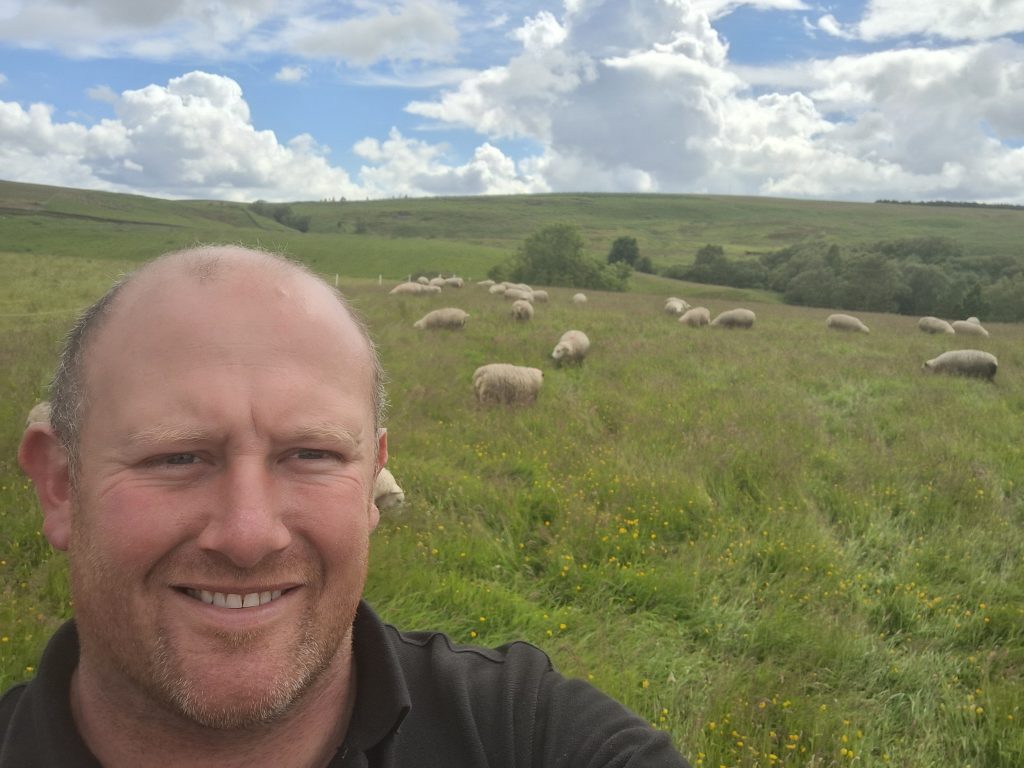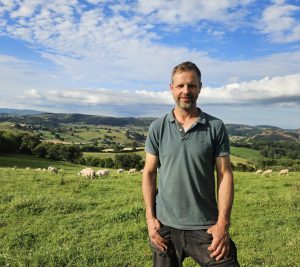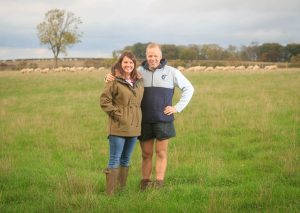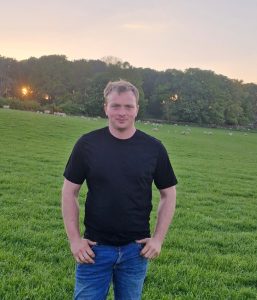with thanks to James Johnson and family, Hexham, Northumberland
Introducing an efficient, profitable low input regen system to the Johnson family’s mixed farming operations, included a call for a change to their livestock genetics. “Getting the maternals right is critical, and then everything else follows,” says James who has found his solution for the sheep enterprise in grass bred and reared Aberfield and Highlanders from Innovis.
“We’ve been on a journey grading up our North of England Mule and Texel cross flock to Aberfields and Highlanders; six years on and we’re almost there. We now have the maternal genetics to cope with rotational grazing and if needed supplementary grass silage over winter but without any bought in concentrate. The entire flock thrives on just grass and GS4 mixes and has the ability to maintain itself in BCS 2.5 to 3 throughout the year. We score pre tupping, post scanning and every two three weeks pre lambing.”
“Lambing previously started in March, but it now begins in early April so it’s more in line with grass growth. Ewes have to lamb themselves outdoors with minimal intervention and while they always require some help, we’re talking about 5% to 6% assistance which is acceptable and in excess of 90% lamb in their first cycle. We introduce one ram to up to 80 ewes, but we have run at 1,100 ewes.”
Fact file
James Johnson farming in partnership with brother, Stuart and parents, Richard and Rosi Johnson
- West Wharmley and Broomhouse Farm, Hexham, Northumberland
- 1,100 acres grassland and arable
- 550 ewes, Aberfield, Highlander and Abertex crosses
- 170 ewe Primera, Abertex and Aberblack nucleus breeding flock
- 70 head suckler enterprise
- 90 head suckler cow replacement enterprise
“The ewes have plenty of milk and they look after their lambs; they’re reaching 20.5kg to 21kg target weight by 13 to 14 weeks when we start drafting. After weaning, the lambs also follow a mob grazing system on herbal leys and are moved every one to two days; apart from a few stragglers, they’re all away by Christmas. That’s a big change – we used to have up to 200 Texel cross Mule lambs left to finish in the new year, but in a challenging year we were known to have up to 400 left.
“Furthermore, the Aberfield and Highlander ewes are also maturing at a lighter weight, they’re averaging 75kg compared with the big hungry Mules which were verging on 100kg.”
The Johnson family ran a traditional mixed unit until 10 years ago when they began to transition from a conventional high input, high yield system to a low input, regenerative system which ultimately focused on soil improvement, reduced input costs and in turn a more efficient, profitable, and all-round resilient business. The sheep enterprise then featured North of England Mules crossed with Texel and Suffolk tups for finished lamb production while the cattle enterprise focused on producing Charolais cross show calves.
We decided to turn the livestock enterprises around to fit a low input system and realised we had to reconsider our genetics.
“We decided to turn the livestock enterprises around to fit a low input system and realised we had to reconsider our genetics. Initially we wanted a more maternal ewe to allow an outdoor, easier lambing requiring less feed and labour inputs.
“In 2018 we bought an Abertex tup and 70 Aberfield cross Scottish Blackface ewe lambs, and the following year some three-quarter ewe lambs. Two years later we lambed outdoors with no additional feed, all the Aberfield cross ewes scanned as singles and pairs; only one required help. This was the watershed moment for us and we invested in two Innovis tups, an Aberfield and a Highlander. This season, we lambed most of our ewes outdoors, triplets included, with minimal intervention, only lambing singles indoors to allow easy mothering on of triplets we had lifted off ewes lambed outside.”
With the addition of a new holding and a splitting of the workforce in 2017, the Johnsons agreed an easier calving system was required. They introduced a homebred Charolais bull with a high EBV for ease of calving and high growth rates. Following the success of the sheep enterprise’s introduction of maternal EBVs, they began to change their entire suckler system for Stabilisers which offered high maternal performance and good growth rates in 2021.
“Selected Aberfield, Highlander and Abertex cross ewes have been used to breed replacement females, with the remainder crossed to Texel and Suffolk tups for finished lamb production. In 2024, we have introduced the Primera terminal sire for easier outdoor lambing, with faster finishing to suit our forage system.
That’s one of the best things about Innovis genetics, they’re all performance recorded and backed by very, very accurate data; these rams actually do what it says on the tin.
“While we still buy tups on looks, we like to use the data too; having bought tups with high EBVs for 15 years, by switching to Innovis, it has given us more data to choose tups with. The figures really do work in terms of estimated breeding values a ram will pass on to his progeny,” he says. “That’s one of the best things about Innovis genetics, they’re all performance recorded and backed by very, very accurate data; these rams actually do what it says on the tin.”
To the future, and James believes the family’s livestock enterprises are future fit to embrace the new payment regime. “We’re farming smaller more efficient sheep, requiring fewer inputs including time. Added together and they’re helping to reduce the unit’s carbon footprint as well as emissions while improving its resilience.”



